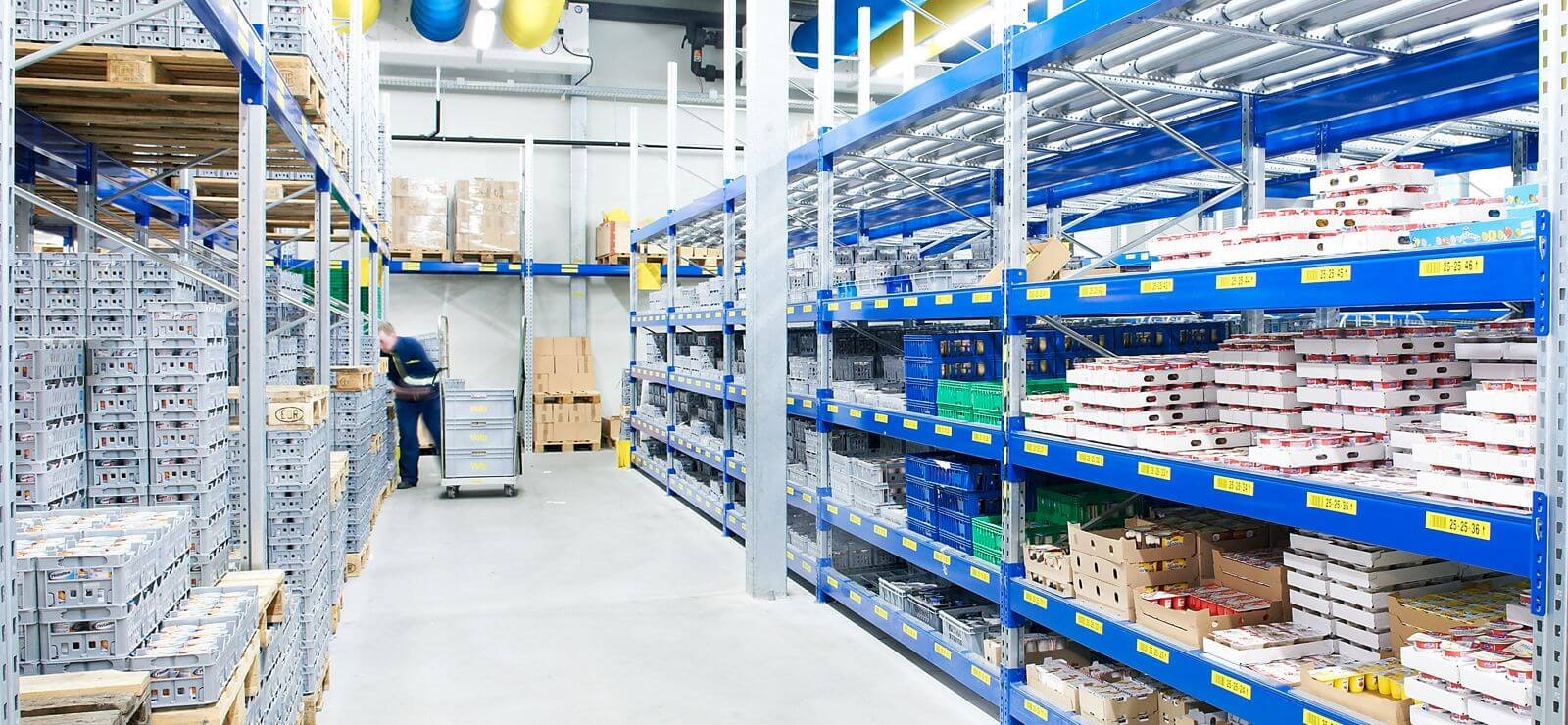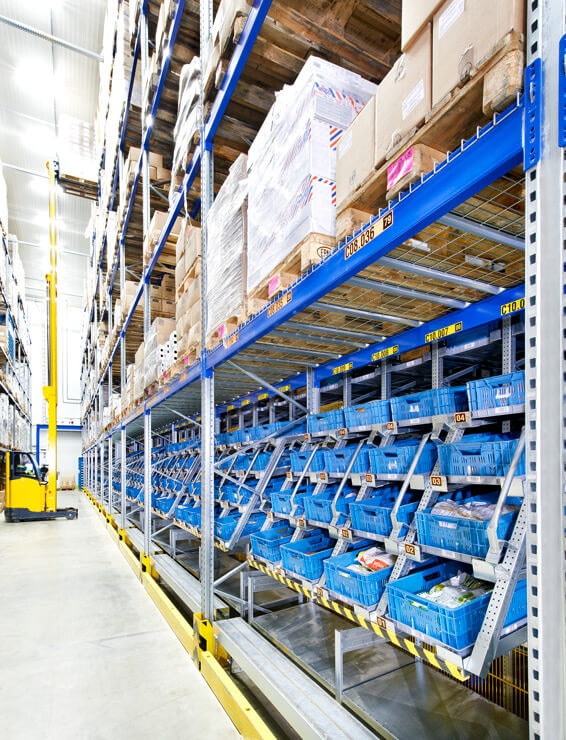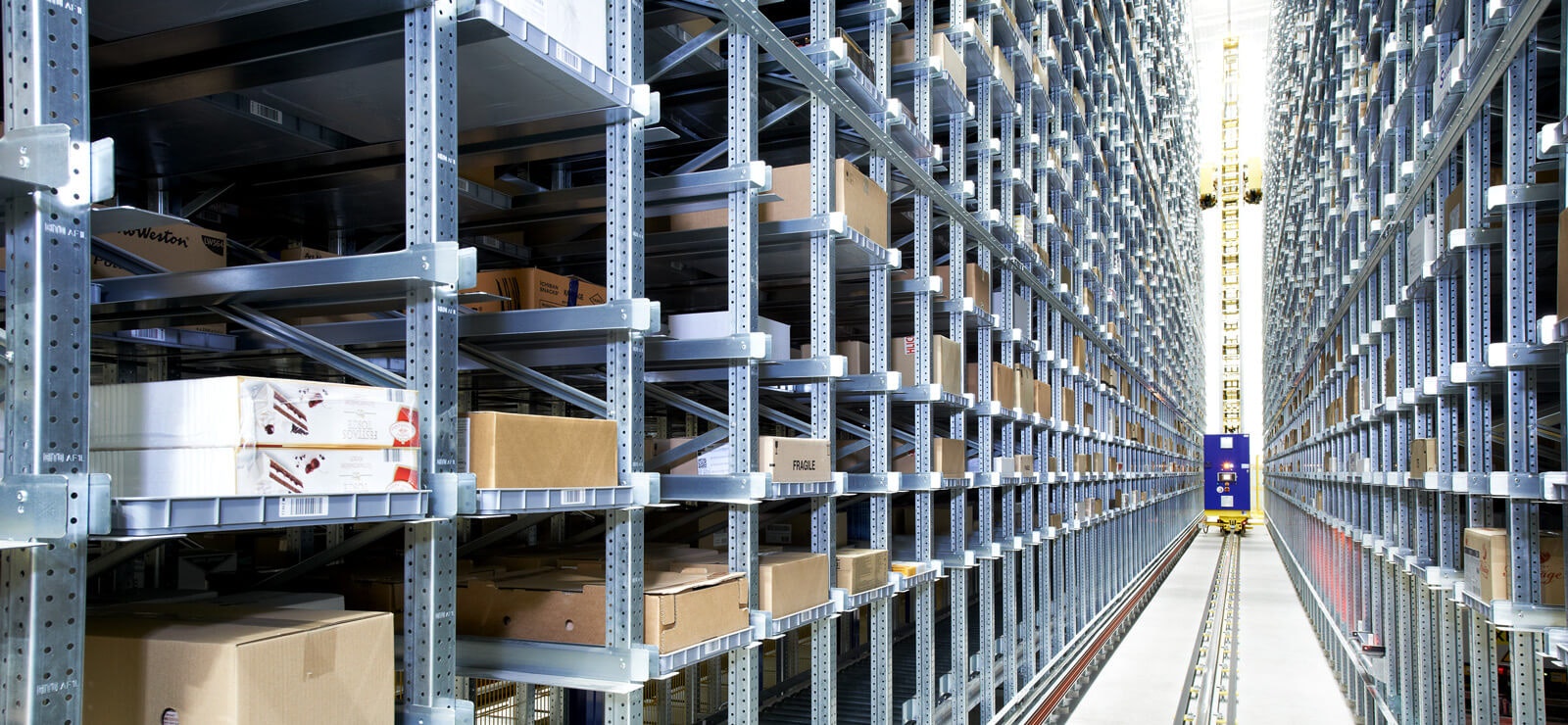Facts & Challenges
The food industry, consisting of food manufacturers, retailers and wholesalers, catering, etc., has undergone major changes in recent years. The influence of digitalisation and Industry 4.0 changed business models and led to the emergence of food online trading and home delivery services; further changes are to be expected. These models are reshaping both wholesale and retail food trade as well as food logistics. In addition to traditional factors such as a growing range of products, volatile demand, limited space for logistics activities, increasingly smaller sales areas and an increasing degree of urbanization, a change in consumer behaviour can also be observed, according to the TU Berlin study "Future Trends in Food Logistics”.
According to the "Handelsreport Lebensmittel 2018", the wholesale trade is involved to a considerable extent in the food value chain. With a sales volume of EUR 248.9 billion in 2017, it exceeds the food retail trade volume by EUR 158.3 billion. The food industry has many other alternatives for selling its products than through the food retail channel. These are, for example, specialist retailers, teleshopping, vending machines, itinerant retailers and direct sales as well as the bulk consumer business (including hotels, restaurants, catering), industrial processors and export. In terms of total sales, the alternative sales channels are more important than the food retail trade.
E-commerce & food wholesale
More and more food wholesalers are operating their own online shop for wholesale customers and also for private customers. They are often at an advantage over retailers such as supermarkets and drugstore chains, as they have already gained experience in prompt delivery to restaurants, petrol stations and kiosks. Experts agree: The online food trade has a promising future as soon as the issue of delivery on the "last mile" is resolved. Tests are currently being made with pick-up stations or, in some metropolitan areas, with same-day delivery models. The product range includes all foods for daily use such as meat, vegetables, fresh fruit, tea, non-alcoholic and alcoholic beverages, coffee, delicatessen and organic products. It must be guaranteed that the cold chain is not interrupted when handling temperature sensitive foods. The question whether an online shop can operate profitably or not is usually decided in the warehouse, because picking costs are often very high (around 70 cents per item). Therefore, only those who trim their processes to the highest possible level of efficiency will be able to make a profit in the foreseeable future with online food deliveries. One example of success is the British online supermarket Ocado. By using optimal software and technology, such as robots that take the goods to the picker, orders can be collated in less than five minutes which drastically reduces the cost per order.
Trends in the wholesale food sector
- It can be noticed that the consumer behaviour is changing which of course also has an impact on the wholesale food trade. For example, the range of beverages such as craft beers is wider today, the demand for ready-to-eat products and regional products is on the rise, new flavouring, etc.
- Growing range of products, volatile demand, limited space for logistics and reduced floor space in sales areas, increasing degree of urbanisation
- Wholesalers are venturing into new business models, online trade has been opened to private customers
- New delivery models: collection boxes, same-day delivery
- Separate warehouses for processing online orders as well as B2B and B2C orders
- With more and more single households the market for frozen products is growing rapidly. This means that more energy-intensive storage facilities for fresh and frozen foods are needed which in turn leads to a growing demand for energy-efficient storage techniques and equipment as well as good construction planning.
- The requirements for picking and distribution (capacity & efficiency) continue to increase.
- Increased demands on warehouse management to make goods available at the right time and in the right place (e.g. pick-up boxes)
What are the requirements for efficient logistics?
Never before has it been as important as today to organise logistics processes along the entire supply chain as efficiently as possible. In the food business, monitoring cold chains and complying with best before dates (BBD) are just as essential as fast response times to orders from retailers, restaurants and caterers or private customers. Especially in the frozen foods industry there is a strong price pressure on merchandise due to high energy costs. Storage and picking systems must be resistant to cold. Furthermore, it is advisable to make full use of the available storage space. In addition, the enormous product variety and the demand that goods must be permanently available make storage and picking requirements ever more complex. Above all, the wholesale food trade is characterised by a complex and wide ranging customer base. Every day, a large number of orders with different reference lines has to be shipped to many customers, which requires a powerful warehouse management system.
As the online food trade keeps growing, not only logistical "last mile” solutions are still being sought and tested in practice. In addition, the intralogistics industry is also facing major challenges to ensure that customers can be supplied with fresh products the same day wherever possible. For reasons of cost efficiency, retailers and wholesalers keep their e-commerce supplies in warehouses especially designed for this purpose where they can keep much higher stock levels and pick goods more efficiently. Above a certain critical level, logistics costs can be drastically reduced compared to a branch-based approach provided that all processes are designed efficiently.
Space saving food storage at the appropriate storage temperature is essential for success in the online grocery business. Carton and pallet live storage do not only allow compact storage, but also ensure that incoming goods are clearly separated from foods prepared for shipment. In addition, neat storage in FIFO order helps to reduce order processing times. For fresh foods such as salads from regional producers that usually leave warehouses on the day of delivery, physical storage is usually not worthwhile. It is better to temporarily store these goods in a separate picking area, cross dock them with other products stored in the warehouse and then ship them off together.
Lead times can further be reduced by keeping B2B and B2C products in separate warehouses, since in the B2B business pallets or larger storage units are usually handled by forklift trucks. In the B2C sector, on the other hand, pickers will handle rather small quantities with picking trolleys. Those who want to serve both target groups from one and the same warehouse are making life unnecessarily difficult.
The bottom line is that anyone in the online food sector has to put quite a bit of thinking into how to design and optimise logistics processes.






